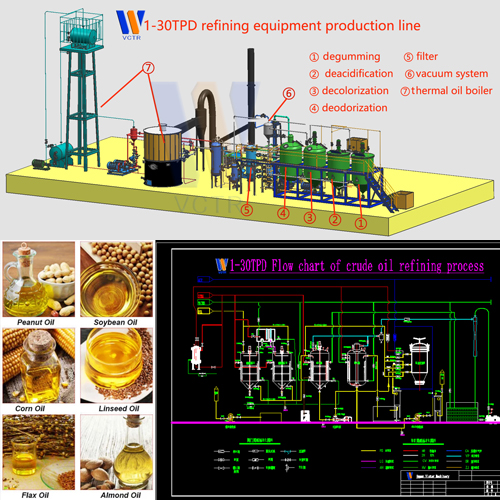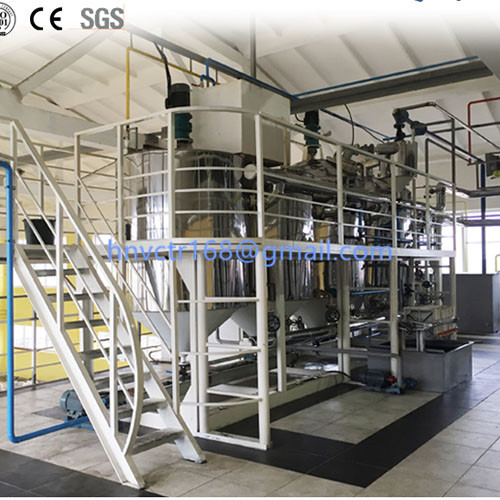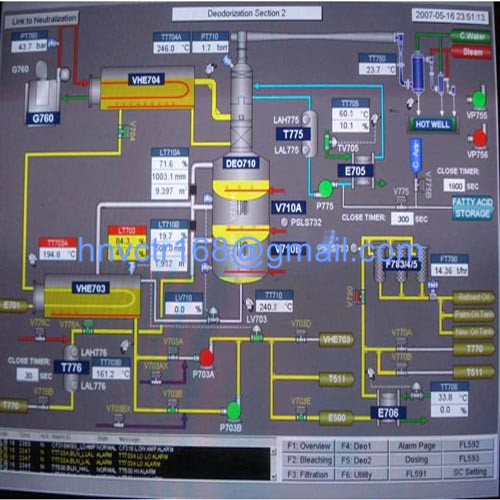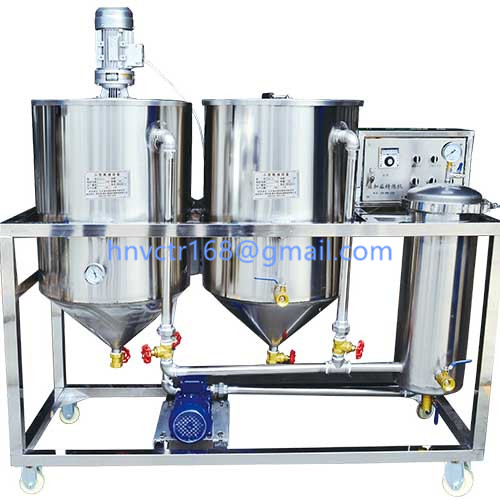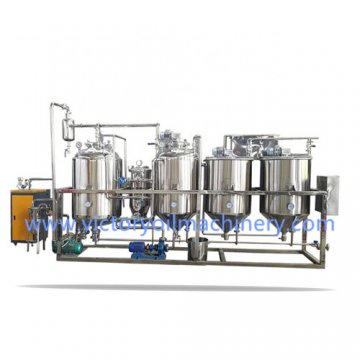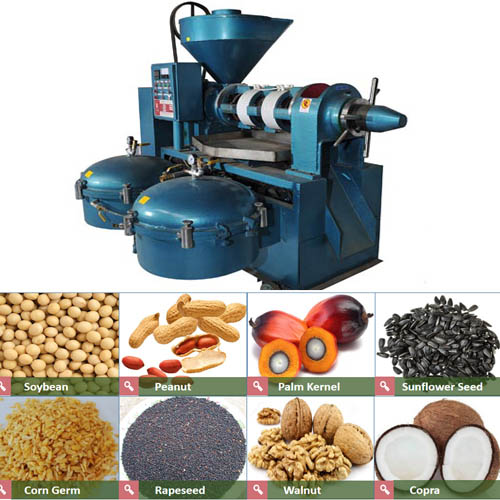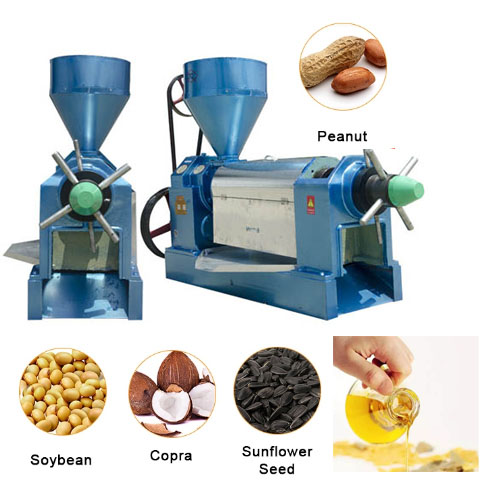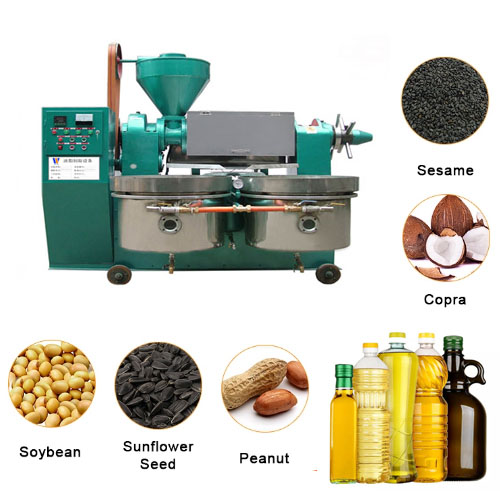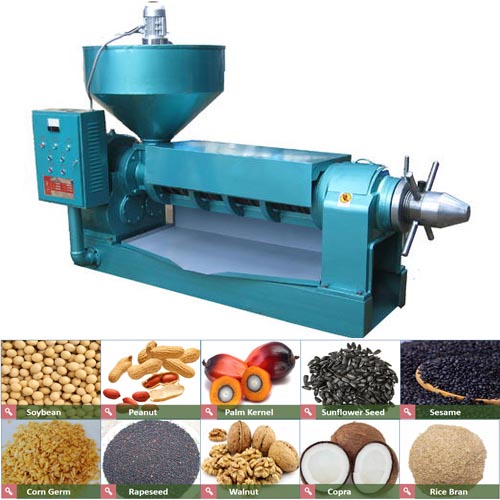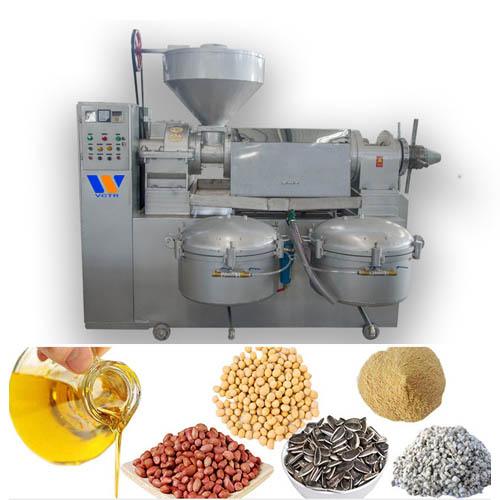Oil processing technology-Oil production by solvent extraction method
1. The basic process of oil production by solvent extraction method
Oil production by solvent extraction is an oil production method that uses the principle of extraction, selects a certain organic solvent that can dissolve oil, and contacts the oil (soaking or spraying) to extract the oil in the oil seed.The basic process is: immersing the flakes (or pre-pressed cake) in the selected solvent, dissolving the oil in the solvent (composition of mixed oil), and then mix the oil with solid residue (meal), mixed oil and evaporation, stripping, according to different boiling point solvent evaporation into steam and oil separation, to obtain oil (extracted crude oil).The solvent vapor is condensed, cooled and recovered and then reused. The meal also contains a certain amount of solvent, and the dried meal is obtained after desolventizing and drying. The solvent vapor volatilized during desolventizing and drying is still condensed and cooled for recycling.
2. Advantages of oil production by solvent extraction method
Oil production by solvent extraction method has the advantages of low residual oil rate in meal (high oil yield), low labor intensity, good working environment and good meal quality.
It can be seen that, compared with the oil pressing method and the solvent extraction method is indeed an advanced oil production method, which has been widely used.
3. The basic principle of oil solvent extraction
Oil solvent extraction is the process of extracting oil from oil with organic solvents. The solvent extraction of oil can be regarded as solid-liquid extraction, which is a process of separating the relevant components in solid materials by using solvents with different solubility properties for different substances.During extraction, the oil is treated with a solvent, and the easily soluble components (mainly grease) are dissolved in the solvent. When the oil is extracted in a static state, the oil is transferred in the form of molecules, which is a "molecular diffusion". However, the solvent extraction process is mostly carried out under the condition of relative movement between the solvent and the pellets. Therefore, in addition to molecular diffusion, there is also a "convection diffusion" process that depends on the flow of the solvent.
Oil production by solvent extraction is an oil production method that uses the principle of extraction, selects a certain organic solvent that can dissolve oil, and contacts the oil (soaking or spraying) to extract the oil in the oil seed.The basic process is: immersing the flakes (or pre-pressed cake) in the selected solvent, dissolving the oil in the solvent (composition of mixed oil), and then mix the oil with solid residue (meal), mixed oil and evaporation, stripping, according to different boiling point solvent evaporation into steam and oil separation, to obtain oil (extracted crude oil).The solvent vapor is condensed, cooled and recovered and then reused. The meal also contains a certain amount of solvent, and the dried meal is obtained after desolventizing and drying. The solvent vapor volatilized during desolventizing and drying is still condensed and cooled for recycling.
2. Advantages of oil production by solvent extraction method
Oil production by solvent extraction method has the advantages of low residual oil rate in meal (high oil yield), low labor intensity, good working environment and good meal quality.
It can be seen that, compared with the oil pressing method and the solvent extraction method is indeed an advanced oil production method, which has been widely used.
3. The basic principle of oil solvent extraction
Oil solvent extraction is the process of extracting oil from oil with organic solvents. The solvent extraction of oil can be regarded as solid-liquid extraction, which is a process of separating the relevant components in solid materials by using solvents with different solubility properties for different substances.During extraction, the oil is treated with a solvent, and the easily soluble components (mainly grease) are dissolved in the solvent. When the oil is extracted in a static state, the oil is transferred in the form of molecules, which is a "molecular diffusion". However, the solvent extraction process is mostly carried out under the condition of relative movement between the solvent and the pellets. Therefore, in addition to molecular diffusion, there is also a "convection diffusion" process that depends on the flow of the solvent.

